Verbena annual
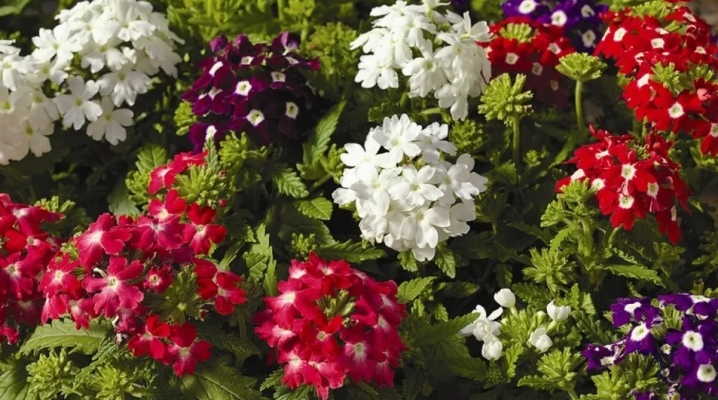
Annual or perennial verbena is a plant known for thousands of years. Believing Christians claim that it grew at the foot of Golgotha and became healing, because the blood of the Savior was dripping on it. There are books that describe methods of treating verbena for 120 diseases, and also indicate the rules for its cultivation, collection and storage for medicinal purposes. This culture has many popular names, up to the Tears of Juno or Isis. The most common use of this beautiful plant is for decorative purposes. It looks great on a variety of flower beds in courtyards and front gardens.
Is verbena an annual or a perennial?
In the botanical description, Lamb's (the order to which the small vervain family belongs) are represented not only by herbs, but also by shrubs and even trees. Verbena has 35 genera and more than 1.2 thousand species. This order has hardly changed after modern phylogenetic studies.
There is also other information - after the work of breeders on the improvement of the culture demanded in landscape design, there are more than 120 species of vervains.
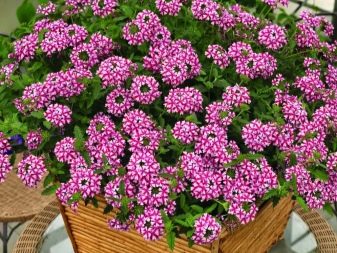

Therefore, the name verbena can mean:
- herbaceous or semi-shrub forms;
- annual plants or perennials (or perennials, but grown by seedlings as an annual crop that cannot tolerate cold winters of a temperate climate);
- variants with an erect, outstretched or creeping stem, which has in common only pubescence of hairs;
- plants of the most whimsical spectrum of colors: from white to dark blue, one-color or with eyes of a different shade;
- cultures with oval, elongated, pubescent, dissected, incised or whole leaves;
- specimens with a calyx flower, corolla, paniculate inflorescences, tassels or ears of different diameters.
Such a lengthy description is easily explained if you remember that verbena grows in the Americas (according to botanists, this is where most of the species are located). But it is also found in Europe, in the Far East and even in Central Asia. If we recall the claims that this holy plant grew on Calvary, then this means that it can be seen in the Middle East. Perennial verbena could rightfully be included in the rating of the most picturesque perennials that will decorate any garden plot, but it only tolerates small frosts.
Therefore, herbaceous forms and semi-shrubs, the height of which can reach one and a half meters, are grown annually or sheltered for the winter with cutting off long stems right at the ground level.
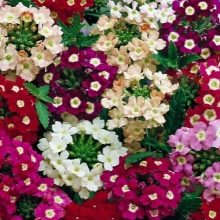
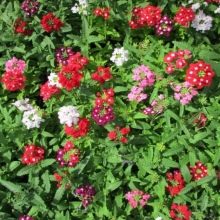

Varieties
Natural splendor, due to the variability of climatic conditions in which this beautiful plant with a pleasant aroma grows, as well as the work of breeders, have led to the emergence of whole groups, whose representatives are willingly grown by lovers of beautiful flower beds and personal plots.
Verbena straight is a rather rare culture. This is practically the only representative that can be grown as a perennial, subject to shelter for the winter. Spear-shaped verbena, in addition to its natural habitat, winters only on the European continent, and even then not in all its regions.
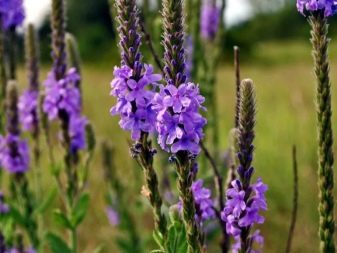
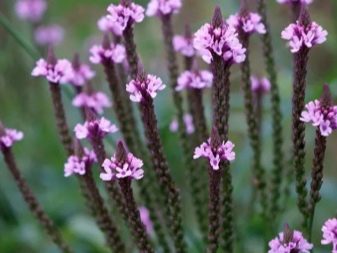
Tall Buenos Aires blooms both with the seedling method of cultivation and when planting with seeds, it just depends on it whether it will bloom sooner or later. Beautiful bushes in the harsh Russian conditions can only be grown as annuals, although in fact it is also a perennial plant. These types of verbena come in a lilac-lilac range, with spear-shaped or umbrella-shaped inflorescences.
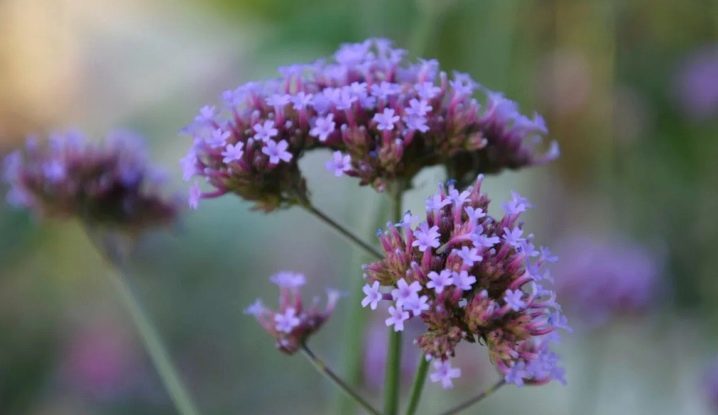
Hybrids are conventionally divided into 2 broad groups: compact and large-flowered. But here flower growers have almost unlimited choice, you can safely prioritize according to the needs for the design of flower beds of the most variable shape, front gardens and plots, as well as balconies and loggias.
The large-flowered variety is considered the most decorative, used in open space or in the design of lush flower beds. The most famous varieties, the seeds of which can be found without difficulty, look like this.
- "Tuscany". These are low bushes in white and purple tones.
- "Cyclops". It has purple-blue flowers with a white eye in the middle.
- Etna. The colors are flame, and the peephole resembles a small creamy star.
- "Yuliya". The variety is purple-violet in color, the central blotches are small, white.
- "Mammut". A specimen with a unique unique aroma, large oblong inflorescences and creeping shoots. It is considered an ideal option for lawns or balcony pots, curly hanging flowerpots.
- "Ideal". Stems are straight, up to 30 cm, many colors.
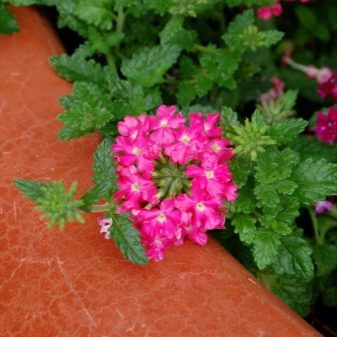
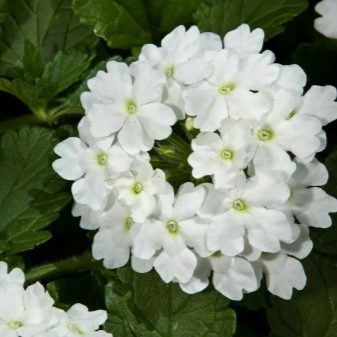
The equally popular compact verbena has short stems and tightly arranged inflorescences. The varieties are slightly smaller than those of the large-flowered verbena, but the most famous are charming and picturesque. These include:
- carmine "Defense" with a beautiful yellowish-greenish eye;
- white-eyed blue "Amethyst";
- pink "Lady Dream", which smells unimaginably sweet when blooming.
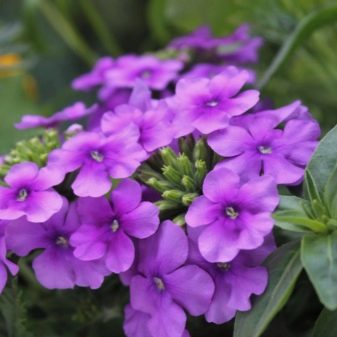
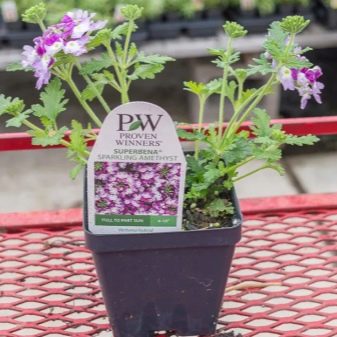
Ampelnaya is the least-developed culture by gardeners, and it deserves special mention. Red and white "Estrella", cream "Empress Peach", "Imagination" in blue and lilac shades - all these are options that can beautifully decorate the garden. These are small-flowered plants that form real caps of inflorescences and have the ability to bloom throughout the summer and even part of autumn.
Ampel verbena is a great option for decorating an open veranda or terrace, porch, balcony, lamps or large standing flowerpots.
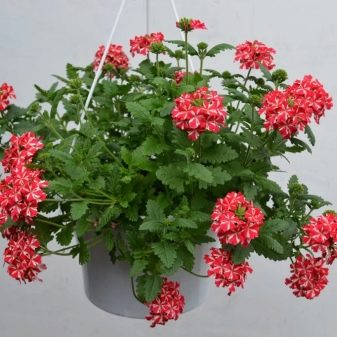
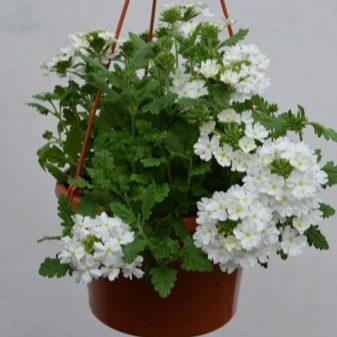
Growing
On sites for florists, you can find favorable days for planting verbena for seedlings and seeds in open ground (according to the lunar calendar). May bloom involves planting seedlings in the winter months. But if the climate does not allow breeding at such an early time, then this should be taken care of in late April or early May.
Planting seeds requires preliminary preparation of seed material - stratification in the cold, which is carried out in the refrigerator, in a plastic bag between wet layers of gauze. Subsequently, the grains are placed on the surface of light and pre-moistened soil, poured abundantly due to not very good germination. Seedlings can simply be thinned out if there are too many of them. To do this, just pinch them over the root.
The seeds are sprinkled with a thin layer of soil and kept in a warm place under a film to create a greenhouse effect.
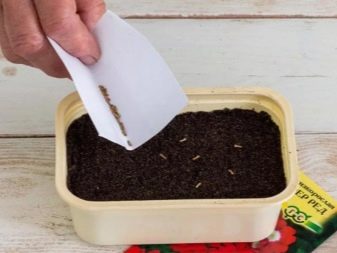

Seedlings:
- moisten as the top layer of the soil dries up;
- dive when 3-4 leaves appear;
- they are fed 12-14 days after the pick with special mineral fertilizers.
After planting in the ground, verbena will require the usual care measures: regular watering, weeding and loosening the soil, repeated feeding, removing wilted flowers so that the plant does not waste energy on the formation of a box with seeds. The care is pretty simple. This plant is considered unpretentious, but it generously thanks for the care of abundant flowering and aroma.
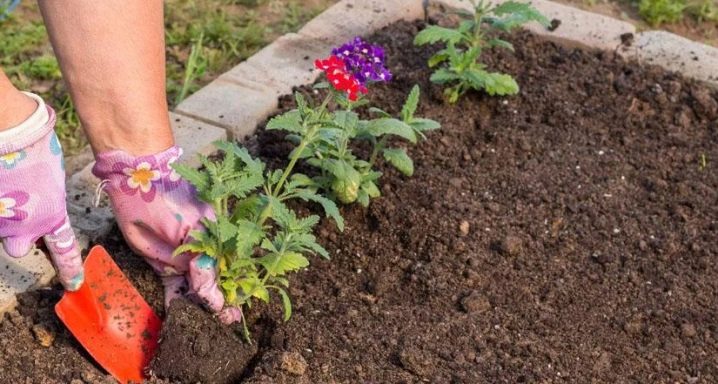
Examples of flowers in a flower bed
Let's take a look at some beautiful examples of vervain design.
- A great option is verbena in a figured flowerpot.
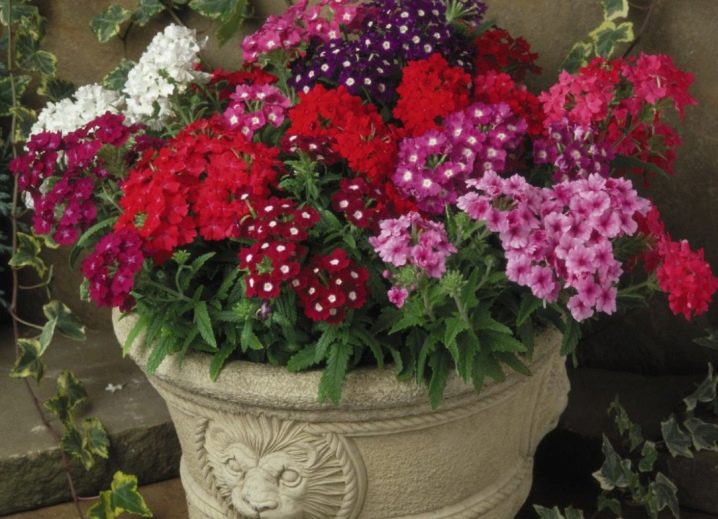
- Multicolor composition with simultaneous wild flowering.
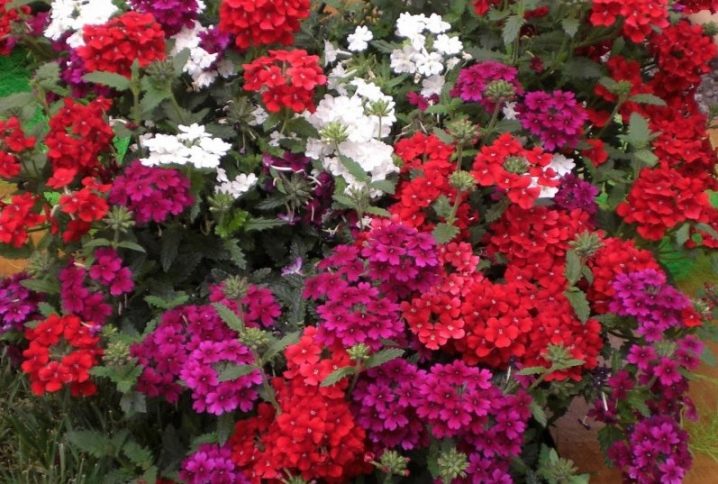
- A round verbena flower bed is suitable for filling confined spaces.

- A successful combination of multidirectional plants that create aesthetic visualization from near and far.
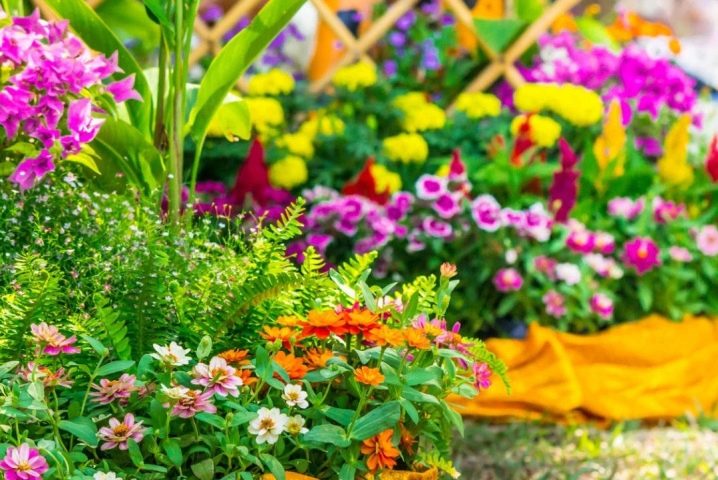
- The use of verbena in a multi-level design near a residential area or outbuildings.
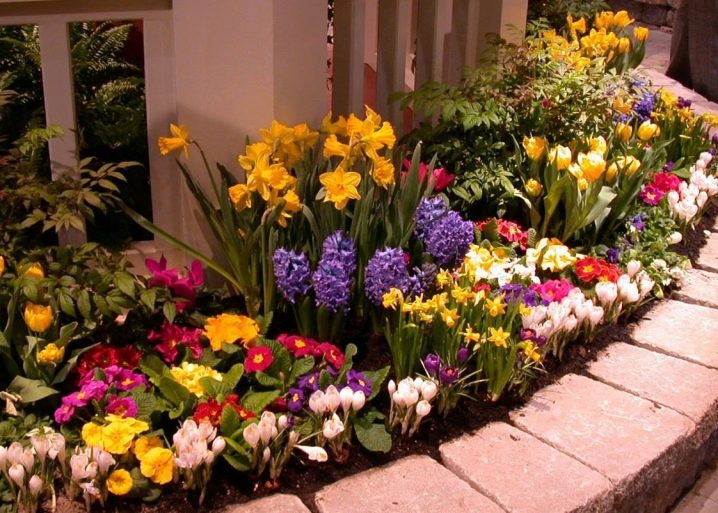
- Just a luxurious plot with imitation of natural grass.
The possibilities of the ornamental plant are still underutilized. Verbena can be applied to the most variable style priorities of owners of large areas and to decorate tiny front gardens.
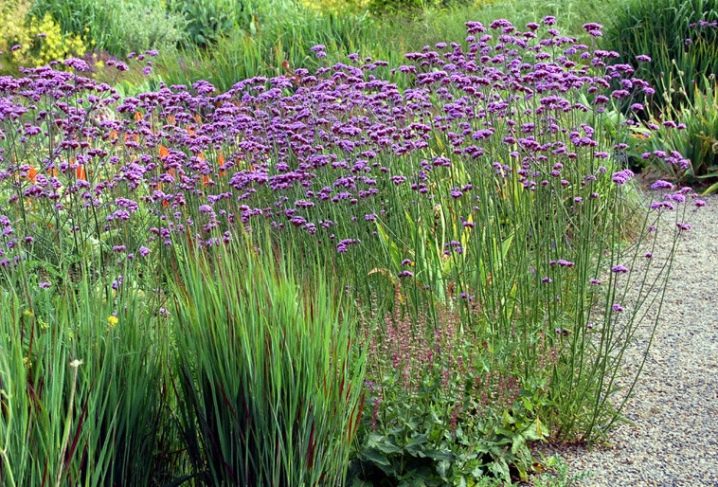







































































































The comment was sent successfully.